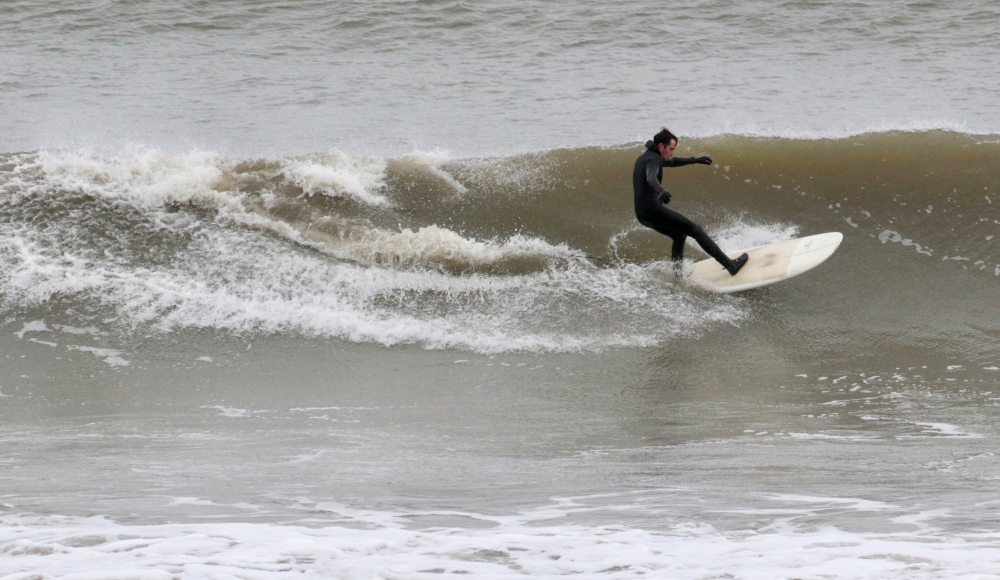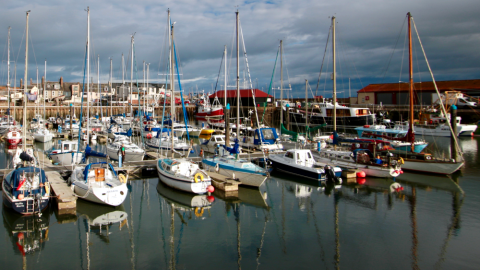Why is it important?
Marine transport and coastal infrastructure are important to parts of Scotland’s coastal state economy. These sectors are likely to experience the impacts of extreme weather events (such as storms) and sea level rise due to global warming.
What is already happening?
The National Coastal Change Assessment (NCCA) mapped and quantified the susceptibility of the Scottish coastline to erosion processes with 19% of the coast made up of soft sediment and between half and one third of coastal buildings, transport and water supply network lying within these erodable sections (Brooks, Roberts, & Brooke, 2020) (see Coastal erosion and flood risk management assessment). Sea level around Scotland has risen in response to global warming (Horsburgh et al., 2020 and see Climate Change - Sea level). Although sea level and the associated risk of coastal flooding (due to higher extreme water levels) have increased (Horsburgh et al., 2020; Masselink et al., 2020), their impacts have been mitigated to some extent by improved flood defences and advances in flood forecasting (Brooks et al., 2020).
What is likely to happen in future?
On climate-change time-scales, the prediction of wave and storm impacts still has a high level of uncertainty, although warmer surface ocean temperatures will change the strength and track of storms in the North Atlantic (Brooks et al., 2020; Wolf et al., 2020). Areas of coast which currently experience coastal erosion are expected to have increased erosion rates in future, due to sea level rise (Masselink et al., 2020 and see Climate Change - Storms, waves and coastal erosion assessment). In addition, management interventions are expected to allow more regions around the UK to experience coastal erosion (by removal of coastal defences as part of managed re-alignment strategies; Brooks et al., 2020).
Sea-level rise projections vary by climate change scenario and by geographical location. Sea-level rise at the end of this century in Edinburgh is projected to be between 0.08-0.49 m in a low emissions scenario, or 0.30-0.90 m in a high emissions scenario (see Climate Change - Sea level). Due to the higher mean sea level, the frequency and height of coastal flooding events is also expected to increase by the end of the century (Brooks et al., 2020).

The NCCA estimate that by 2050 at least 50 residential homes, 1.6 km railway, 5.2 km road network and 2.4 km clean-water network may be affected in Scotland by coastal erosion (Brooks et al., 2020). Coastal infrastructure which may be at risk of flooding events includes power stations, gas terminals, refineries, waste water treatment plants and ports.
Ports and shipping could in future be subject to such impacts as flooding events due to sea-level rise, changes to the frequency and intensity of extreme weather, and changes to depositional regimes in harbour entrances requiring changes in dredging operations (Brooks et al., 2020). Climate change impacts on Arctic sea ice may also provide the UK shipping industry with new opportunities as a gateway hub where goods can be transferred between ice-classed and conventional vessels (Brooks et al., 2020).
The impact of human-induced climate change will not only be far reaching in the marine ecosystem (see Biological impacts of climate change), there will also be impacts on the marine economy. While many of these impacts will be negative, there will also be some opportunities to develop the blue economy, through its potential role in mitigating for climate change (see Opportunities for climate change mitigation) and through changes within sectors (for example, new commercial fish species).
Please see the relevant sections below, for further details on three major sectors: Aquaculture, Fishing and Coastal infrastructure, ports and shipping.
In addition to these, the tourism and recreation sectors will also be impacted by climate change (Coles, 2020). Coastal resorts and nature parks, like all coastal regions, could be subject to increased risk of sea level rise, coastal flooding, erosion and extreme weather. The magnitude of these impacts still remain uncertain. Climate change may also increase opportunities for the sector with warmer air and sea temperatures making seaside visits more attractive and possibly extending the peak season either side of the current peak (Coles, 2020).

In general, the impacts of climate change will differ by sector, and adaptation to climate change and the opportunities that may emerge will also differ. Recent work by Cunningham (2019) highlighted that the priorities and place-based issues in small island communities around Scotland required a combination of community-based action and strategic policy.

Links and resources
|
, 2020. Impacts of climate change on transport and infrastructure relevant to the coastal and marine environment around the UK. MCCIP Science Review 2020, pp.566–592. Available at: http://www.mccip.org.uk/media/2027/24_transport_2020.pdf. |
|
, 2019. Impacts of climate change on coastal geomorphology and coastal erosion relevant to the coastal and marine environment around the UK. MCCIP Science Review 2020, pp.158–189. Available at: http://www.mccip.org.uk/media/2011/08_coastal_geomorphology_2020.pdf. |
|
, 2020. Impacts of climate change on storms and waves relevant to the coastal and marine environment around the UK. MCCIP Science Review 2020, pp.132–157. Available at: http://www.mccip.org.uk/media/2010/07_storms_waves_2020.pdf. |

